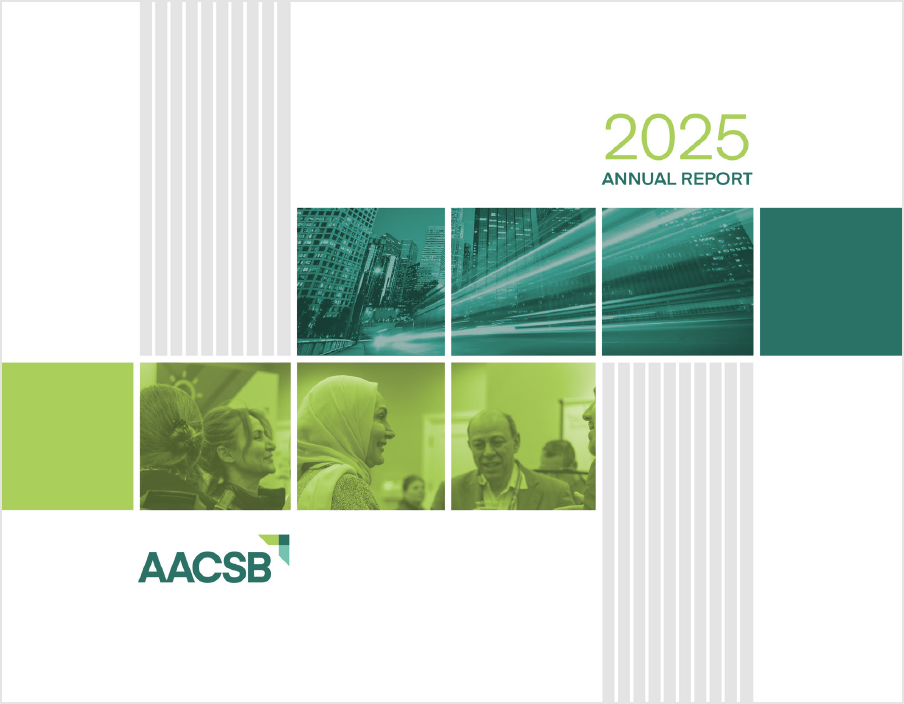AACSB Member Voices: François Thérin
In this blog series, we reach out to individuals involved in AACSB's Business Education Alliance to garner their personal perspectives on business education. We ask educators and practitioners about their professional journey and any insights they can share related to the future of our industry. In this interview, François Thérin shares perspectives on how AACSB's network can foster community and collaborations among regional schools and organizations.
Please introduce yourself and tell us how you learned about AACSB.
My name is François Thérin. Until recently, I was head of the Graduate School of Management at Taylor’s University in Malaysia.
I have been involved with AACSB for more than 20 years. I was first introduced to AACSB when I was working at Grenoble Ecole de Management, and we started the AACSB accreditation process. Subsequently, I worked at business schools that were already accredited, in progress, or about to begin their accreditation journey. More recently, when I was the director of IMT Dubai, I initiated their accreditation process.
What values have you gained from being a part of the AACSBBusiness Education Alliance?
The accreditation process and the many trainings and workshops available are very valuable learning experiences. The AACSB Exchange platform is also fantastic for knowledge sharing. I especially enjoy the conferences, as they are great opportunities to network and benchmark with business schools from all over the world. I also have had the chance to serve as a member of two regional groups—the Middle East and North Africa Regional Network and the Asia Pacific Regional Network—and they provide excellent avenues to discuss regional issues and develop regional partnerships. The network fosters collegiality among us.
A great thing about the regional network meetings held at big international conferences and regional annual meetings is that they cater to smaller, informal groups, so there are more sharing opportunities. These regional groups are very important because they provide an opportunity for people to meet in a smaller closed-room setting. Thanks to the Asia Pacific Regional Network, we are working on a book on case studies in the AP region. This is great because as you know, there is a lack of case studies in the region; therefore the regional network helps us to develop such projects.
At the last Asia Pacific Conference in Seoul, the Asia Pacific Regional Network went on a campus visit to Hanyang School of Business. This was a valuable experience because we got to see an example of new technologies schools are using in their day-to-day operations. It would be nice to have more such opportunities during conferences in the future.
How do you think AACSB can play a role in meeting the needs of the business community?
Through its accreditation process and in general, through the many opportunities to learn together, AACSB is helping business schools in staying close to the needs of the business community and in preparing industry-ready graduates.
It is always great to invite industry guest speakers at conferences. Especially for regional events, it would be ideal to get speakers from regional businesses or organizations instead of from far abroad. Another idea is to have a company visit during these conferences. We could also try to leverage the alumni community in the city in which the conference will take place. We would be pleased to share and interact with the alumni community within the city or country since most of them would already be working.
In your ideal world, what would you like to see more of or improved in higher education in Asia Pacific?
In an ideal world, I would like to see more interactions between business schools and the corporate world. Cooperation with industry is an essential point for business schools.
Also, perhaps I wish for more intra-Asia collaborations between business schools. Many schools in Asia like to collaborate with schools in U.S. or Europe, but I think many Asian schools have reached a level of maturity and advancement to where we could work more together on research, joint degrees, etc.






